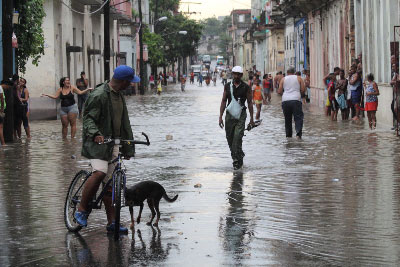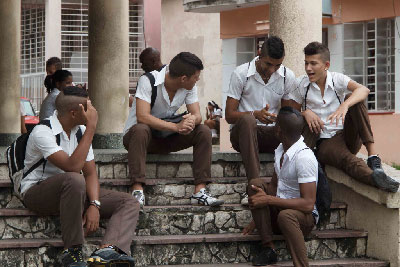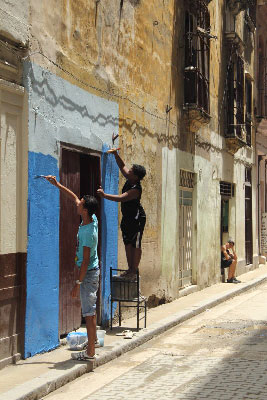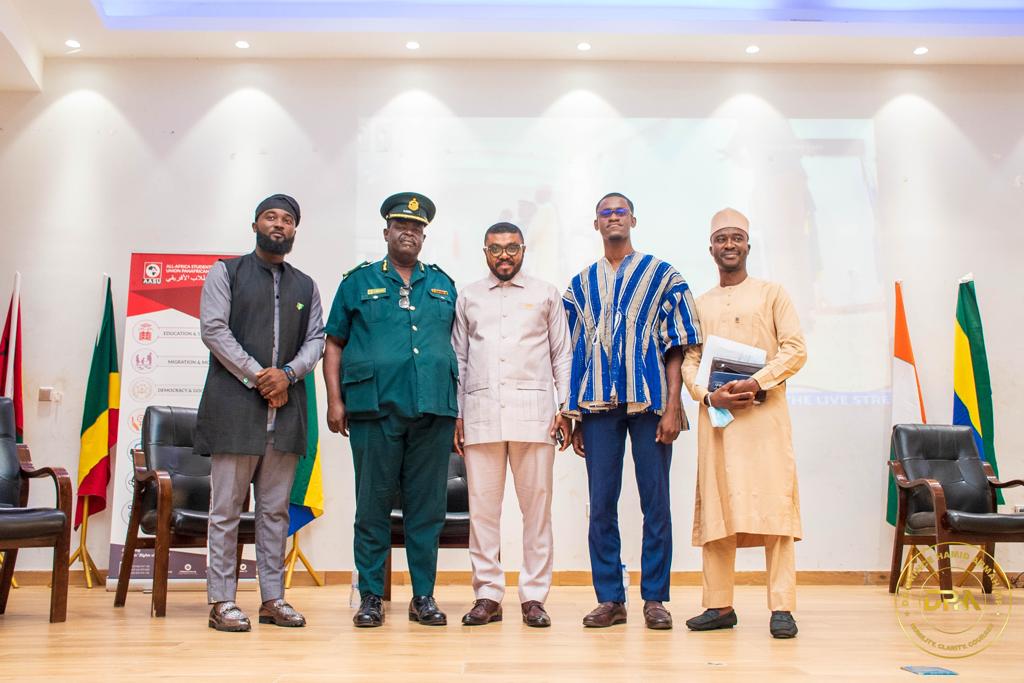By Esteban Morales*
HAVANA TIMES — Before the start of the 2013-2014 school year in Cuba, ministers and officials from the country’s ministries of education met to assess the situation of educational institutions in the country.
If you asked me, I would say that the two greatest achievements of the Cuban revolution were the Cuban educational system and the development of the scientific sector. Nothing that has been accomplished to date surpasses them in terms of merit and results.
Unfortunately, none of the speeches given at the meeting or the documents published by the Cuban press addressed an issue that I consider of the utmost importance: the question of “color” in the Cuban educational system.
Cuba is a multiracial society. However, this issue is not addressed anywhere in the country’s curricula. This applies to primary, upper secondary and higher education.
The issue is not only glossed over in the various courses and conferences that students attend; it is also alarmingly absent from our history and other textbooks.
Our teachers and professors also tend to dodge questions related to the history of Africa, Asia and the Middle East, questions closely related to the racial question of Cuba.
The issue of race, of course, should not be seen as an exclusively educational concern. Rather, it must be approached as something that concerns the whole of society, which must work to educate students and citizens in general, in this crucially important area.
In Cuba, racial stereotyping, discrimination and racism are not institutional – they are not the result of a policy that defends or encourages these practices through an official political structure.
That said, Cuban institutions, which should help us in our struggle to make Cuban society a harmoniously multiracial or multicolored community, are not yet doing all they should in this regard.
This stems, in part, from a lack of political will and an excess of bureaucratic hurdles, coupled with inexplicable delays in finding solutions to this pressing problem that has such a profound impact on the country’s efforts to ensure social equality.
In recent years, Cuba has begun to address this situation through coordinated and collaborative efforts led by the Association of Cuban Writers and Artists (UNEAC), aimed at addressing the country’s needs in this area through far-reaching efforts .

The four fundamental institutions (the quadrilateral of social forces) that should be targeted by these efforts, in my view, are:
– School, understood as all levels of education and training.
– The mass media, understood as the press, radio, television, cinema and all the mechanisms used to divulge and disseminate information.
– The national statistical system, whose mechanisms for collecting and processing economic and social information are essential for building a database that will make it possible to address the racial question at the national level and at all levels of education and Scientific Research.
– Science, understood as a process that contributes to general research and lays the foundations of knowledge of our society. The social and human sciences are particularly important in tackling the racial question in a comprehensive way.
These four areas must be targeted if we are to make progress in the fight against racial discrimination and racism. To design social policies capable of eradicating these problems, we must move towards a more systematic and scientific approach to the problems.
The multiple connections between these institutions, which constitute the cultural context of the problem, could be considered as a fifth catalyst.
It will be impossible to truly raise awareness of the multiracial nature of our society, let alone eradicate racism, if citizens are not considered an integral part of these processes and if we do not target our education system, because anything that is not taught in school is generally not part of our culture.
What we need is an anti-discriminatory and anti-racist culture that will make our society more aware of the stereotypes that persist among us and therefore more equal and just.
Our education system faces another problem, closely related to those described above.
The overemphasis on Western values on which our education is still based – and Cuban culture in general – stands in the way of our efforts to create a more open and expansive culture, resulting in the lack of balance that exists between different racial groups in Cuban society today.
This lends importance to the debate surrounding the continued hegemony of Cuba’s Hispanic heritage over all other traditions, especially African ones, which continue to suffer stereotyping, marginalization and discrimination from a considerable part of the population. .
Our students have relatively easy access to Spanish, Hispanic and European literature and much of the culture of these different parts of the world. However, they know practically nothing about Africa and its contemporary culture, less about Asia and even less about the Middle East.
After graduating from high school, they set out into the world with an incomplete, biased, racist, and Manichean view of Cuban culture.

They also enter university with a blind and sterile idea of what universal values are, that is, with a rather incomplete and distorted image of Cuban culture and its roots.
Moreover, they graduate without knowing the reasons for the racial diversity of their classes and the cultural differences that sometimes arise among the students, not to mention their individual behavior, religious beliefs and other values.
They leave school, in short, without having known each other well, as members of the same community, and this simply because the system has avoided offering them a rational explanation of racial, color and cultural differences. that exist in the country. .
It would seem, in fact, that we are educated, not to become Cubans, but to become whites. Such an identity is dangerously less complex and less important for us, who must assimilate the intricacies of Cuban culture – if we want to become citizens of a multiracial community, that is it.
The most serious consequences of this are that those who are brought up to be racist continue to be racist afterwards, and those who are not owe their condition to personal concerns, family circumstances and different forms of social contact.
These trends, however, do not seem to be shaped by education, a space in which the positive should be valued and stereotypes, prejudices and discrimination flushed out.
Since stereotypes, discrimination and racism are not exclusively a matter of ignorance but also depend on the social and family circumstances that shape an individual’s opinions, we are still not in a position to know whether, at the end of their studies, these individuals they go out into the world as responsible citizens that we need.
That said, the newer generations seem to be making progress in this regard, to mingle more freely, with fewer reservations about issues of race. The problem often arises, in fact, at the family level.
To avoid this, we cannot leave things to chance. We must drive a process as a society, from the top and from the bottom, that is to say treat society, individuals and families as a whole.
Jose Marti exposed countless ideas and social behaviors – which he illustrated with his own life – that could eradicate racism from social consciousness. It seems, however, that in this battle José Antonio Saco, with his concept of a white Cuban community without blacks and his ideal of racial purification, continues to win.
The racial stereotypes that we continue to endure, discrimination and racism, more than the problems inherited from Cuba’s colonial and republican times, are phenomena that arise from the imperfections of our society, maintained by the general imperfections of our system educative.
—–
To visit Esteban Morales’ blog
in Spanish.



